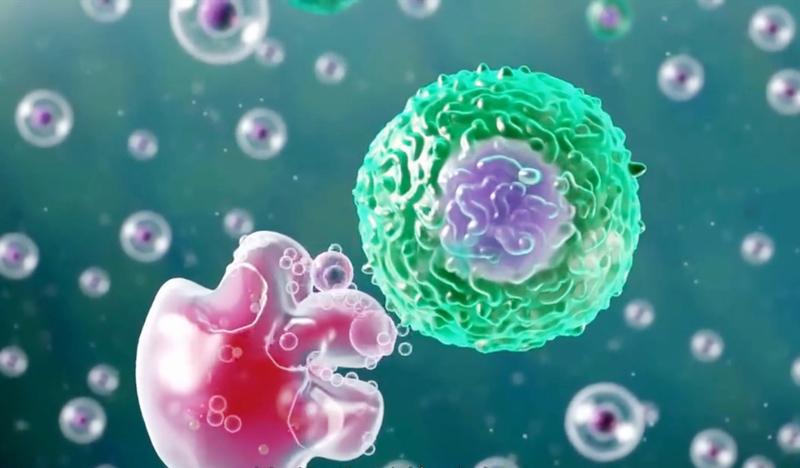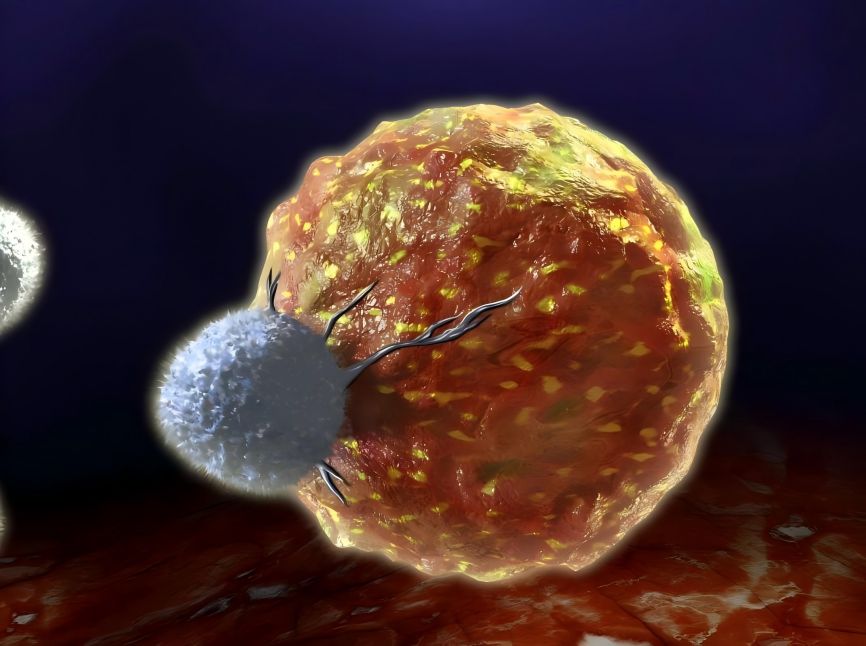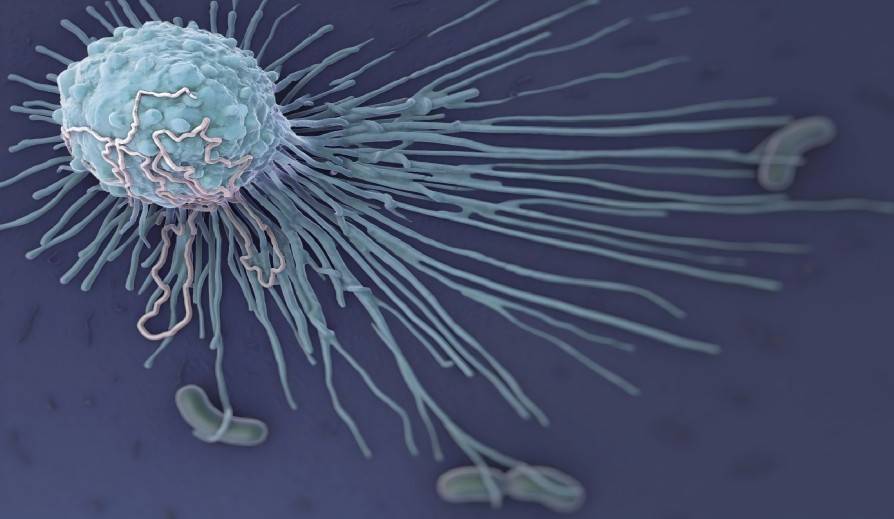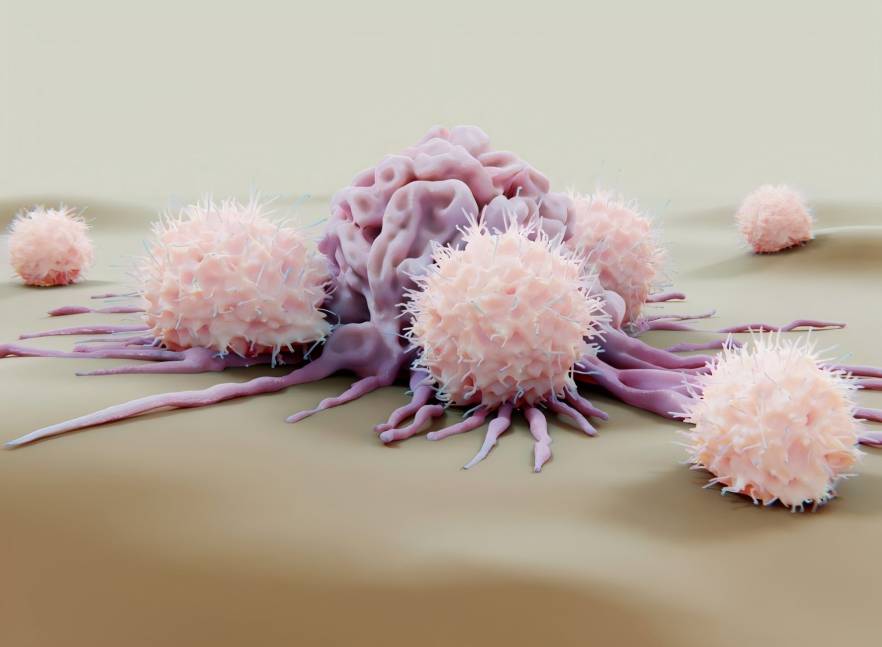인삼 추출물 Ginsenoside 및 면역 조절
인삼 is widely used as a natural tonic in Asian countries. It was first used mainly as a source of food 그리고energy, but researchers have gradually discovered 의important effects on immune function, the cardiovascular system, the nervous system, and cancer treatment [1–2]. Ginsenosides are the main active ingredients in ginseng. Many studies have reported that ginsenosides have the effect of 규제하는immune function, and have observed that ginsenosides improve insulin resistance, inhibit viruses in vitro, improve limb ischemia in mice, and promote angiogenesis. This article mainly reviews and analyzes the regulatory effects of ginsenosides on immune organs, immune cells and immune molecules, as well as their possible mechanisms of action.
ginsenosides의 개요 1
인삼 사포닌은 주로 인삼의 뿌리, 줄기, 잎, 꽃, 열매에서 추출되는 트리테르펜 사포닌군이다.이들은 일종의 다당류 유도체로, 주로 설탕과 비당류 화합물 [6]의 히드록시기로 구성되어 있다.인삼 사포닌은 100 종류 이상이 분리 및 확인되었다.아글리콘의 차이로 인해 주로 다마라네형과 올레아네형의 두 종류로 나뉘는데, 그 중 다마라네형이 진세노사이드의 함량이 가장 높다.다마라인형 진세노사이드는 Rb1, Rb2, Rb3, Rc, Rg3)와 프로토파나사트리올형 진세노사이드 (Re, Rf, Rg, Rg2, Rh1 등) [7]로 나뉜다.Ginsenosides는 항산화, 항암, 항비만, 면역 조절, 간 보호, 혈중 지질 저하 뿐만 아니라 대사 조절, 심혈관 질환 개선 등 다양한 생물학적 기능을 가지고 있습니다.그들은 표적 종양 치료 및 당뇨병 치료를 위한 보조 약물로 사용될 수도 있습니다 [3, 8-11].
2. 면역기관에 대한 ginsenosides의 조절효과
면역기관은 면역조절의 기본이며 주로 중추면역기관과 말초면역기관이 포함된다.전자는 주로 골수와 흉선으로 구성되였고 후자는 주로 비장과 림파구조로 구성되였다.인삼 saponins면역기관을 조절함으로써 다양한 질병의 진행을 지연시킬 수 있다.인삼 사포닌 Rg3는 Ca2+-의존적인 경로를 통해 미토콘드리아 항산화 능력을 향상시키고, 사람 골수 중간엽 줄기세포의 증식 및 분화 잠재력을 향상시키며, 골수 중간엽 줄기세포의 노화를 방지한다 [12].류등 13)은 cyclophosphamide 가 생쥐에 면역억제를 유도하여 체중 감소, 흉선 및 비장 지수 감소, 심각한 병리적 손상을 초래함을 발견하였다.그러나 Rg3를 처리하였을 때 cyclophosphamide로 유도된 면역억제 효과가 반전되어 흉선과 비장의 형태가 유의하게 개선되었으며, 장기지수도 증가하여 Rg3가 면역억제 마우스의 면역력을 향상시킬 수 있음을 알 수 있었다 [13].
Rg3는 cyclophosphamide에 의해 유도된 면역 억제 효과를 되돌릴 수 있습니다.흉선과 비장의 형태가 유의하게 개선되었으며, 장기지수도 증가하여 Rg3가 면역억제마우스의 면역력을 향상시킬 수 있음을 알 수 있다.
Rg1은 흉선 세포의 증식 능력과 흉선 지수를 향상시켜 신체의 노화를 지연시킬 수 있다.항암 연구에서,의 긍정적 조절 효과ginsenosides on immune organs has also been observed. In a mouse model of aplastic anemia, protopanaxadiol-type ginsenosides significantly increased the number of 조혈cells in the bone marrow, and the colony numbers of myeloid, erythroid, and megakaryocyte progenitor cells were significantly increased [15]. Cao et알다.[16]found that ginsenoside Rg1 improved the hematopoietic stem cells of aplastic anemia 에 의해억제Bax translocation-induced 미 토 콘 드리아apoptosis, there에 의해restoring hematopoietic function.
화학요법은 종양의 주요 치료법 중 하나이며, 골수 억제는 그 주요 부작용 중 하나이다.동물실험 결과 protopanaxadiol 형의 Rb1, Rc, Rb2, Rd와 protopanaxatriol 형의 Re, Rg1, Rf는 cyclophosphamide로 유발된 골수억제를 효과적으로 개선할 수 있는 것으로 나타났다.ginsenosides를 처리한 후 체중, 혈구 수, 조혈 관련 사이토카인, 비장 및 흉선 지수가 증가하였고, 골수세포의 사멸이 억제되었다 [17].또한 Rg3를 간암 마우스 모델에 지속적으로 투여한 결과, 생쥐의 면역기관에서 superoxide dismutase의 활성은 증진된 반면 xanthine oxidase의 활성과 malondialdehyde 수준은 감소되어 Rg3는 항암 및 항산화 활성이 우수하며, 종양 보유 생물의 면역 상태를 개선할 수 있어 ginsenosides 가 body&를 조절할 수 있음을 알 수 있었다#39;s 면역기관 [18]의 성장을 촉진함으로써 항암 면역기능을 한다.점점 더 많은 연구들은 ginsenosides과 그들의 물질이 행사 지도 모 른 다는 것을 발견 그들의 항 산화 효과의 규제에 참가 함 으로써 다양 한 산화 신호 통로 [8], Keap1/Nrf2/같은, PI3K/Akt, 그리고 NF-κ B 신호 통로이다.

3. 면역세포에 대한 ginsenosides의 조절효과
면역세포는 body&의 참가자들이다#39;의 면역반응과 면역기능의 집행자이기도 하며 림프구, 수지상세포, 대식세포, NK세포, mast 셀등을 포함한다.현대 약리학적 연구에 따르면 진세노사이드가 면역세포에 조절 효과가 있는 것으로 나타났다.
3. T 세포의 조절 1
T 세포는 면역반응 과정에서 중요한 역할을 하며 B 세포의 항체 생성 보조 및 억제, 특정 항원 및 미토겐에 반응, 사이토카인 생성 등 다양한 생물학적 기능을 한다.여러 연구에서 T 세포에 대한 진세노사이드의 면역 조절 효과가 보고되었다.Wang 등 (19)은 생쥐 흑색종 모델로 치료 후 ginsenoside Rh2가 종양의 성장을 억제하고 생쥐의 생존을 연장시킨다는 사실을 발견했다.종양의 T 림프구 침윤이 유의적으로 증가되어 Rh2가 마우스의 항암면역반응을 향상시킬 수 있음을 알 수 있었다.그러나 특정 조건에서는 진세노사이드 (ginsenoside) 가 T 세포 증식을 억제하기도 한다.Wang 등 (20)은 쥐 피부 이식 모델을 통해 Rd 가 쥐 말초혈액에서 CD4+ T 세포 및 CD8+ T 세포의 수를 현저히 감소시키고, Th1 사이토카인의 발현수준을 억제하며, 피부 이식 생존기간을 연장하고, 이식물의 병리학적 손상을 개선하며, 동종 이식 거부 반응을 효과적으로 길항하며, 이를 통해 ginsenoside Rd 가 이식 거부 반응을 포함한 Th1 유도 질환의 치료에 잠재적으로 유용함을 관찰하였다.또한, 과도한 Th17세포 자가면역 반응과 Treg 세포 기능 부전이 다발성 경화증 및 자가면역 뇌척수염 [21]과 같은 자가면역 질환의 중요한 원인이 될 수 있다.공원 et알다.[22]의 표현을 Rg3 부정적으로 할 수 있 다는 것을 발견 규제 ROR γ에서 t CD4 + t 세포, 그렇게 함 으로써 억제 차별화와 Th17-mediated Th17 셀 neuroinflammation다.
3. B 세포의 조절 2
B 세포는 주로 항원의 자극을 받은후 항체를 생성하고 체액면역을 통해 면역작용을 발휘한다.인체에 흡수되는 진세노사이드 (ginsenoside)의 주된 형태는 진세노사이드 대사체 화합물 K (CK)인 것으로 밝혀졌다.장등은 연구를 통해 콜라겐으로 유발된 관절염의 경우 CK 치료가 마우스 다발성 관절염 지수, 부은 관절의 수, 비장병리점수, B 세포 증식, 혈청항체 IgG1과 IgG2a의 수치를 감소시킬 수 있으며, B 세포의 활성화를 억제함으로써 콜라겐으로 유발된 관절염의 악화를 부분적으로 개선할 수 있다는 것을 발견하였다.Chen 등 [24]은 또한 CK 가 비특이적 관절염의 쥐 모델에서 기억 B 세포를 억제함으로써 비특이적 관절염의 심각성을 완화할 수 있음을 발견했다.전신성 홍반성 루푸스의 복합병원성질환에서 면역기능조절장애는 B 세포의 과활성화와 많은 수의 자가항체 생성을 특징으로 하는 주요 원인질환의 하나이다.유신 [25]은 ginsenosides에 의한 전신성 홍반성 루푸스 체액성 면역 조절에 관한 연구에서 Rb1, Rh1, Rg1, Rg3 모두 B 세포 증식을 억제하고, B 세포 사멸을 촉진하며, IgG와 IgM 분비를 억제하여 ginsenosides 가 체액성 면역을 억제하는 기능이 있음을 밝혔다.

3. 대식세포의 조절 3
대식세포는 염증반응의 주요영향세포로서 부동한 조건하에서 형태적, 기능적으로 뚜렷한 이상이 나타난다.활성화 상태, 기능 및 분비된 인자에 따라 주로 고전적으로 활성화된 M1대식세포와 선택적으로 활성화된 M2대식세포로 구분된다.M1 대식 세포는 일반적으로 자극을 받은 lipopolysaccharide에 의해 IFN-γ, TNF-α 또는 granulocyte-대식 세포colony-stimulating 요인 (GM-CSF)이다.M1 대식 세포 익스프레스 CD68 CD80과 CD86 분비 pro-inflammatory 같은 요인들을 IL-1 β, IL-6 그리고 IL-12.그들은 염증의 초기 단계와 항종양 과정에서 중요한 역할을 한다.
M2대식세포는 IL-4, IL-10, IL-13과 면역 복합체와 같은 Th2 사이토카인에 의해 활성화된다.이들은 CD163, CD204, CD206을 발현하고 염증 인자를 억제해 염증 반응과 조직 회복을 억제하는 역할을 한다.종양에서 IL-10, TNF, CCL17과 같은 사이토카인을 분비하여 종양의 진행을 촉진 [26]한다.인삼 사포닌은 조건에 따라 대식세포 아형에 따라 조절 효과가 다르다.
GinsenosideRg3 was found to inhibit the expression of M1 macrophage marker genes and the production of iNOS and NO when it acts on lipopolysaccharide-induced mouse peritoneal macrophages. It also induces the polarization of M2 macrophages and promotes the elimination of inflammation in a mouse peritonitis model, providing a new idea for the pharmacological design of anti-inflammatory drugs [27]. GinsenosideRh2 can significantly induce M2 macrophages to differentiate into the M1 phenotype, thereby inhibiting the proliferation and migration of lung cancer cells and reducing the expression of various factors such as vascular endothelial growth factor-related proteins, MMP2, and MMP9. suggesting that ginsenoside Rh2 can improve the tumor microenvironment by regulating the phenotype of tumor-associated macrophages in lung cancer [28]. In addition, CK, an active metabolite of ginsenoside, can also regulate macrophages. Liu et al. [29].found that CK can significantly inhibit the phagocytic 함수of macrophages and promote the transformation of macrophages from M1 to M2 during the treatment of collagen-induced arthritis in mice. It can inhibit the secretion of inflammatory factors in the plasma and peritoneal macrophage culture supernatant of mice, and increase the level of IL-10, indicating that CK can treat collagen-induced arthritis by increasing the polarization of anti-inflammatory macrophages [30].
3. NK 세포의 조절 4
NK cells are a type of cytotoxic innate lymphoid cell that is the first line of immune defense when the body is attacked by foreign pathogens. NK cells can produce a variety of chemokines and cytokines (such as IFN-γ), recruit and activate various immune cells (such as T cells and macrophages), and coordinate an immune response against target cells. NK cells are involved in the occurrence, development, or treatment of various diseases, and ginsenosides can delay disease progression by regulating NK cells.
연구 결과, 탈글루코실화 대사 산물인 ginsenoside F1은 NK 세포 기능을 촉진함으로써 만성 축농증에서 호산구의 염증 반응을 감소시키고, IL-4와 IL-13의 발현과 프로스타글란딘 D2 생산에 필요한 조혈 프로스타글란딘 D synthase를 감소시킬 수 있음이 밝혀졌다.그러나 NK 세포가 없을 때 ginsenoside F1치료는 비효과적인데, 이는 ginsenoside F1이 NK 세포 활성을 강화시키며 [31]만성 축농증의 호산구 염증 치료의 잠재적인 전략이 될 수 있음을 시사한다.권양 et al다. [32]또한 ginsenoside F1 홍보 할 수 있 다는 것을 발견의 cytotoxicity NK 세포와 IFN-γ의 생산이다.이상의 결과는 모두 ginsenoside F1이 NK 세포의 기능을 강화시킬 수 있음을 나타내어 NK 세포 기반 면역치료의 이론적 근거를 제공한다.종양 연구 측면에서도 NK 세포에 대한 ginsenosides의 조절 효과가 핵심적인 역할을 합니다.Lee 등 (33)은 Rg3가 MAPK/ERK 경로를 활성화함으로써 NK 세포 활성을 촉진한다는 사실을 밝혀내어 Rg3가 다양한 암 치료에 NK 세포의 세포독성 활성제로 사용될 수 있음을 제시하였다.요약하면, ginsenosides는 NK 세포의 활성을 향상시키고 body&를 개선 할 수 있습니다#39, s 면역기능.

3. 수지상세포의 조절 5
수지상세포는 body's 가장 강력한 전문 항원 제시 세포.그들은 효율적으로 항원을 섭취, 처리 및 나타날 수 있으며, 면역 반응을 시작하고 조절 및 유지의 중심에 있는 초기 T 세포를 효과적으로 활성화할 수 있습니다.현재 수지상세포에 대한 ginsenosides의 면역조절효과에 대해서는 문헌에서 많은 보고가 있었다.
Wang Yi et al. [34] found that Rg1 and Rh1 can increase the expression of HLA-DR and ICAM-1, important molecules in the first and second signal systems on the cell surface, and increase the expression of CD25, CD11c, and CD44, molecules that mediate intercellular adhesion, which is conducive to the formation of T cell clusters and antigen presentation by dendritic cells. which in turn enhances the immune 함수of dendritic cells, indicating that ginsenosides Rg1 and Rh1 can enhance the antigen-presenting ability of dendritic cells. A large number of literatures have reported that ginsenosides have a two-way immunomodulatory effect, which not only enhances the antigen-presenting ability of dendritic cells, but also inhib의the function of dendritic cells under certain conditions.
천 교수 등은 진세노사이드 대사산물 CK 가 관절염에서 수지상세포에 의해 시작된 T 세포 활성을 하향 조절하고, CCL21/ccr7 매개 수지상세포 이동을 억제하고, T 세포와 수지상세포 사이의 신호 전달을 억제해 염증을 감소시키는 것을 발견했다.Luo Hong 등 36)은 collagen-induced rheumatoid arthritis (RA) 모델 생쥐의 비장세포에서 수지상세포의 비율을 조절하여 염증을 억제하고, 이를 통하여 RA 모델 생쥐의 관절염의 병리적 변화를 완화시킬 수 있다는 것을 밝혀내어, ginsenoside 가 비장의 전통적인 수지상세포 subsets의 유형을 조절함으로써 RA 모델 생쥐의 말초혈액의 염증을 억제할 수 있음을 보여주었다.손 등 (37)은 비장 수지상세포 (CD11c+)를 calreticulation 표지된 종양세포와 공동 배양한 결과 Rg3를 처리한 후 CD11c+ 세포의 비율이 유의하게 증가하였음을 밝혀내어 Rg3가 수지상세포에 의한 종양세포의 섭취를 강화할 수 있음을 알 수 있었다.

면역분자의 조절 4
면역분자는 주로 T 림프구, B 림프구, 대식세포 및 기타 세포들이 항원에 의한 자극을 받은후 생성된다.그중에는 주로 림포카인, 보약, 항체 등이 포함된다.인삼 사포닌은 각종 질환에서 면역분자의 조절에 중요한 역할을 하며, 현재 한약재의 보디 & 조절에 대한 첫 번째 선택으로 여겨지고 있다#면역 력 39; s다.
사이토카인에 대한 규제4.1
사이토카인에는 인터루킨, 인터페론, 종양괴사인자 등 다양한 종류가 포함된다.연구에 따르면 진세노사이드는 사이토카인 조절에 참여해 각종 질병의 발생과 발생을 방해한다.오래 사용 et al. [38]ginsenoside 나트륨에 개입 할 Rg1 dextran sulfate-induced 궤양 성 대장 염 BALB/c에서 쥐와 14 일간의 지속적인 관리 한 다는 것을 발견, 체중, 대장암 무게, 대장암 길이, 대장암 무게의 인덱스와 병적인 손상 점수를 대장 염 쥐들은 효과적으로 개선,적은 궤양으로 형성과 염증 성 셀 침투, 및 수준의 IL-6 감소, IL-33, CCL-2, 그리고 TNF-α, 높은 수준의 IL-4 및 IL-10 뿐만 아니라,ginsenoside Rg1이 결장 조직에서 염증성 사이토카인의 발현을 효과적으로 조절할 수 있음을 시사한다.후 ginsenoside Rg1에 작용 CD14 + 구가,의 수준을 IL-6, TNF-α와 셀에 IL-10 supernatant 상당히 증가, 하지만 IL-1b의 수준, 크게 증가 하지 않았다는 것을 제안하고 ginsenosides 구가의 기능을 조절 할 수 있는 [39]다.H22 종양 보유형 마우스 모델에서도 Rh2 옥틸에스터 유도체가 비장 림프구의 증식과 세포독성을 높일 수 있으며, TLR4와 연관되어 있음이 관찰되었다;분비를 수준 같은 성의 IFN-γ, IL-2, 그리고 IL-4 TLR4-/-쥐의 비장 림프 구에 유의하게 [11]증가 했다.위의 연구들은 모두 ginsenoside 가 cytokine의 수준을 조절함으로써 항염증 및 항종양 효과를 발휘한다는 것을 나타낸다.
4. 2 보완의 규정
보체는 혈청, 조직액 및 세포막의 표면에 널리 존재한다.그것은 body&에 널리 관여하는 정교한 조절 메커니즘을 가진 단백질 반응 시스템입니다#39;s 항 감염 방어 반응, 면역 반응 및 특정 면역 병리의 발생 및 발전.현재 면역반응에서 보완에 대한 진세노사이드의 조절효과는 연구자들의 점점 더 많은 관심을 끌고 있다.You Yanli et al. [40]은 ginsenosides 가 prednisone 치료의 임상 효능을 향상시키고, ESR을 감소시키며, 보완 C3의 생산을 촉진 할 수 있음을 발견, ginsenosides 가 body&를 강화 할 수 있음을 나타냅니다#39;의 면역 방어 기능을 보완하는 그들의 역할을 통해.
4. 항체의 조절 3
항체는 면역계에 의한 항원의 자극을 받아 B 세포나 기억 B 세포로부터 분화된 혈장세포에 의해 생성되는 면역글로불린이다.이들은 해당 항원에 특이적으로 결합할 수 있다.항체는 물리화학적 특성과 생물학적 기능에 따라 IgM, IgG, IgA, IgE, IgD 등 5가지로 나눌 수 있다.공원 et al. [41]다는 것을 발견 ginsenosides Rg1과 20 (S) Ⅳ Rg3 직접 IgA을 만들기 위해 B 세포를 자극하는, 할 수 있 음을 나타내는 ginsenosides body&을 강화 할 수 있#39, s 면역기능.Yu 등 [42]은 전신성 홍반성 루푸스 모델 연구에서 ginsenosides Rb1, Rh1, Rg1, Rg3는 B 세포에 의한 IgG와 IgM의 분비를 용량 의존적으로 억제할 수 있음을 밝혔다.

5 전망
면역계는 면역기관, 면역세포, 면역분자로 구성되였다.인체가 면역반응과 면역기능을 수행하는 중요한 체계이다.항원 이물질을 인식하고 제거하며, 신체의 다른 계통과 협조하여 내부 환경의 안정과 신체의 생리적 균형을 유지하는 기능을 가지고 있다.그 때 바디 's 면역체계가 파괴되면 염증, 종양, 당뇨병, 간, 신장질환 등 각종 질병의 발생을 초래할 수 있다.따라서, 신체&의 균형을 유지하기 위해 올바른 약을 선택하는 것이 중요합니다#39, s 면역체계.진세노사이드는 한약의 한 종류로서 연구자들로부터 많은 관심을 받아왔다.최근 많은 연구에서 ginsenosides 가 면역 기관, 면역 세포 또는 면역 분자에 조절 역할을 한다고 보고되어 (표 1) 종양, 염증 또는 당뇨병 치료에 약효가 있음을 나타냅니다.
At present, the research on the mechanism of ginsenosides in the immune system is not yet in-depth, and the potential mechanism of anti-oxidative stress is not yet clear. Although there are many studies on ginsenosides in animal models, there are fewer reports of clinical trials. In the future, further research is needed on the mechanism of ginsenosides in the immune system, and more research on clinical applications is needed to provide more reliable evidence to promote the clinical application of ginsenosides.
참조:
[1] Zhang QH, Wu CF, Duan L, 외.보호 효과의 ginsenoside Rg (3)에 대한 cyclophosphamide ⁃ 유도에 DNA 사멸 손상 및 셀 쥐 [J]다. ArchToxicol, 2008, 82(2):117-123.
[2] 장 Juntian다.최근 인삼 연구의 발전 [J.장수대학교 (의과학), 2009, 19(3):185-191.
[3] Zhou P, Xie W, He S, 외. Ginsenoside Rb1 안티 ⁃ 당뇨 로서 에이전트 and its 근본적인 메커니즘 분석 [J.Cells, 2019, 8(3):204.
[4] 지연, 천영창, 마진홍 외.체외의 억제 효과 ginsenoside Rb ⁃ 2 (ev71 71다 [J다]장쑤대학교 (의과대학) 논문집 2016, 26(3):215-218.
[5] 왕샤오리, 진위, 류루 등.인삼 saponin Rg1은 생쥐의 사지 허혈 후 혈관생성을 개선시킨다 [J.장쑤대학교 (의과대학) 논문집 2018, 28(2):126-128, 134.
[6] 강 Z, Zhonga Y, Wu T, 외. 인삼의 Ginsenoside:염증성 장질환의 유망한 치료법.Pharmacol Rep, 2021, 73(3):700-711.
[7] 신 BK, 권sw (Kwon SW), 박지헌 (Park JH) 인삼의 화학적 다양성 (Chemical diversity of 인삼 saponins from Panax 인삼 [J]) J 인삼res, 2015, 39(4):287-298.
[8] 우환환 (Wu Huanhuan), 루칭시 (Lu Qingxi), 천샤오쿤 (Chen Xiaoqun)Ginsenoside Rh2는 산화 스트레스와 신경 염증을 억제함으로써 마우스에서 스트레스로 인한 우울증과 같은 행동을 완화시킨다 [J].쉬저우의대학논문집 2023, 43 (3):163-169.
[9] Fan W, Huang Y, Zheng H 외.신진대사 치료를 위한 Ginsenosides 증후군 및 심혈관 질환:약리학 및 기전 [J]. Biomed Pharmacother, 2020, 132:110915.
[10] 펑야오, 천신이, 송후판 등.bioinformatics에 기반한 십이지장 선종의 핵심 병원성 유전자 및 표적치료용 한약재 활성성분의 Screening.장쑤대학 (의과학) 2021, 31 (2):158-165.
[11] Wu HC, Hu QR, Luo T, 외.진세노사이드 (ginsenoside)의 면역조절 효과 파생 Rh2 ⁃ O에 TLR4 [J]에 의해 중재된 비장. Int Immunopharmacol, 2021,101:108316.
[12] Hong T, Kim MY, Da Ly D, 외. Ca2 + 미 토 콘 드리아 활성화 biogenesis에서 줄기 세포 운명 및 기능을 개선시 킬 수 있는 Rg3 ⁃ 인간 중간 엽 줄기 세포 치료 [J].Stem 셀 Res 백일 몽, 2020년, 11 (1):467.
[13] 류 X, Zhang Z, Liu J, et al. Ginsenoside Rg3 개선 cyclophosphamide ⁃ 유도 immunocompetence 쥐 [J] c Balb/에 속해 있다.Int Immunopharmacol, 2019, 72:98-111.
[14] 란루이, 선자충, 장징 등.ginsenoside Rg1이 노화 쥐의 흉선의 구조와 기능에 미치는 영향 (J.중국노인학회지 2015, 35(10):2593-2596.
[15] 정이지, 유 XL, 다이아 티 외.Panaxdiol saponins 구성요소 hematopoiesis 촉진 및 modulates T lym ⁃ phocyte 자율신경계 실조 재생 불량 성 빈혈 모델에 쥐 [J].Chin J Integr 의대, 2019년, 25 (12):902-910.
[16] Cao H, Wei W, Xu R, 외. Ginsenoside Rg1은 복원할 수 있습니다 hematopoietic function by inhibiting Bax 전위 ⁃ 중재 mitochondrial 사멸 재생불량성 빈혈 (J.Sci Rep, 2021, 11(1):12742.
[17] 장 H, 장 L, 양 C 외.예방의 효과 protopanaxadiol ⁃ 유형 saponins saponins과 protopanaxatriolyype saponins에 의해 myelosuppression 쥐를 cyclophosphamide [J]다. 프론트 파졸 (Front Pharmacol), 2022년, 부산광역시 해운대구 좌동 13845034
[18] Wu Rihui, Ru Qin, Li Chaoying.간암이 있는 생쥐에서 ginsenoside Rg3의 항산화능에 따른 비교 연구 (J.의료정보, 2014, 27(22):155.
[19] Wang M, Yan SJ, Zhang HT 외.Ginsenoside Rh2는 흑색종 생쥐 모델의 항암 면역학적 반응을 강화한다 [J.Oncol Lett, 2017, 13 (2):681-685.
[20] Wang L, Zhang Y, Chen J 외.면역 억제 효과의 ginsenoside ⁃ Rd 피부 동종 이식 거부반응에에
[21] Kleinewietfeld M, Hafler DA. (독일어). 인간 Treg와 Th17세포의 가소성과 자가면역에서의 역할.Semin Immunol, 2013, 25(4):305-312.
[22] Park YJ, Cho M, 최G 외.신경외과의 중요 한 규정 Th17 셀 반응 및 면역 ⁃ 염증에 의해 ginsenoside Rg3다 [J다] Biomolecules, 2020, 10 (1):122.
[23] Zhang M, Hu S, Tao J, 외.Ginsenoside 쥐 ⁃ K에서 셀 수용체 져 있을 복합적으로 콜라 겐 ⁃ 유도 관절염 [J]다. Inflammopharmacology, 『 한국언론학보 』 2019, 27 (4):845~856.
[24] Chen J, Wang Q, Wu H, 외. 이 ginsenoside 대사산물 화합물 K 행사 its 안티 ⁃ 염증 성 관절염 [J] 유도 해 냈다.Pharm Biol, 2016년, (영어) 54 (7):1280~1288.
[25] 유신.4가지 ginsenoside monomer 가 전신성 홍반성 루푸스의 체액성 면역에 미치는 조절효과 [D].상하이:제2 군의대학, 2017.
[26] 우 K,린 K,리 X 외.재정의 종양 ⁃ 대식 세포 관련 된 환경에서 부차와 기능 종양이다 [J다]Front Immunol, 2020, 11:1731.
[27] Kang S, Park SJ, Lee AY, 외. Ginsenoside Rg(3)는 M2대식세포 분극 [J]을 통해 염증 해결을 촉진한다.J 인삼res, 2018, 42(1):68-74.
[28] Li H, Huang N, Zhu W, 외.변조 관련 된 종양 ⁃ 대식 세포 사이의 잡음과 비 ⁃ 작은 세포 암 종양을 억제 하기 위해 마이 그레이 션과 침략에 의해 ginsenoside Rh2다 [J다]BMC 암, 2018, 18 (1):579.
[29] Liu KK, Wang QT, Yang SM 외. Ginsenoside 화합물 K에서 비정상적인의 활성화 T 림프 구를 억제 한 콜라 겐으로 쥐 ⁃ 유도 관절염 [J]다.
[30] 왕 R, 장 M, 후 S 외.Ginsenoside metabolite 화합물 ⁃ K 조절 macrophage function 2019년까지 115대 108909.
[31] 김 SJ, Lee J), Choi w 가, et al. Ginsenoside F1이 흐르 eosinophilic에 염증 만성 코 뿔 소 ⁃ 축농증을 홍보 함 으로써 NK 세포 기능다 [J다] J 인삼 Res, 2021, 45(6):695-705.
[32] 권혜경 (Kwon HJ), Lee H, Choi GE 외. Ginsenoside F1promotes 세포 독성 NK 세포의 활동을 통해 인슐린 ⁃ like2018, 9:모 른다.
[33] Lee Y, Park A, Park YJ 외. Ginsenoside 20 (R) Ⅳ Rg3 자연 살상을 향상시 킵 세포 활동을 증가시 킴 으로써 활성화 수용체 MAPK/ERK 신호 경로를 통해 표현 [J]다. Int Immunopharmacol은, 2022년, 107:108618.
[34] 왕이, 하오 유, 치우콴 잉 등.수지상세포에서 HLA-DR, CD25, CD44, CD54, CD11c 및 E-selectin의 발현에 미치는 ginsenosides Rg1과 Rh1의 영향 [J.대한면역학회지, 2007, 23(1):46-48.
[35] Chen J, Wu H, Wang Q, 외.Ginsenoside metabolite 화합물 K의 T ⁃ 셀 변조를 통해 밑 수지상 억압 cell 인신매매와 costimulatory 신호, 결과에 콜라 겐의 완화 ⁃ 유도 관절염 [J]다.
[36] Luo Hong, Chen Yanfei, Qian Jun.의 collagen-induced rheumatoid arthritis mouse의 비장 수지상세포 subsets에 대한 ginsenosides의 효과.임상실험의학회지, 2021, 20(10):1021-1025.
[37] 손 KJ (Son KJ), Choi KR, Lee SJ 외. ginsenoside Rg3에 의해 유도된 면역원성 세포 사망: 중요성 수지상 세포에서 ⁃ 기반 안티 ⁃ 종양 면역치료 [J]. immune Netw, 2016, 16(1):75-84.
[38] Long J, Liu XK, Kang ZP, 외. Ginsenoside Rg1ameliorated 실험적 대장 염 by regulating M1/M2대식세포 분극의 균형과 장내 식물체의 항상성 (J. Eur J Pharmacol, 2022, 917:174742에 확인함.
[39] Lee YJ, Son YM, Gu MJ 외. 진세노사이드 분획은 단핵구의 작용과 수지상세포로의 분화를 조절한다 [J].J 인삼 Res, 2015, 39 (1):29-37.
[40] 유연리, 링창취안, 펑잉루 등.전신성 홍반성 루푸스 치료를 위한 prednisone과 병용한 인삼 사포닌의 무작위 이중맹검 대조 연구 [J.대한한의학회지 (Chinese Journal of Integrated Traditional and Western Medicine) 2009, 29(9):776-779.
[41] Park HY, Lee SH, Lee KS, 외. 유도 Ginsenoside Rg1and 20 (S) Ⅳ Rg3 IgA 마우스 B 세포 [J]에 의해 생산 되었다.Immune Netw, 2015, 15(6):331-336.
[42] 유 X 장엔,린 W 외. 전신성 홍반성 루푸스의 체액성 면역에서 4가지 ginsenoside monomers의 조절효과 (regulation effects of four ginsenoside monomers in humoral immunity of systemic lupus erythematosus) Exp Ther Med, 2018, 15(2):2097-2103.


 영어
영어 프랑스
프랑스 스페인
스페인 러시아
러시아 한국
한국 일본
일본




